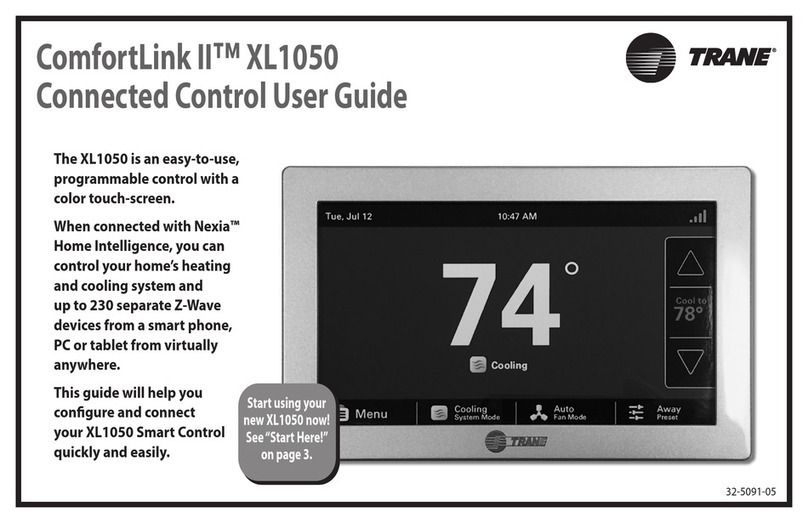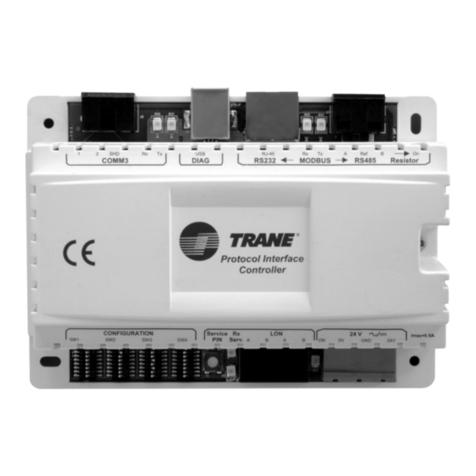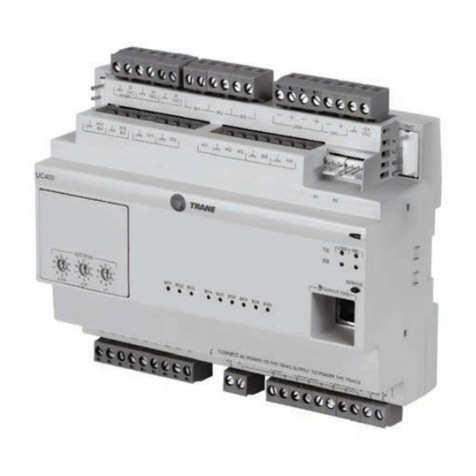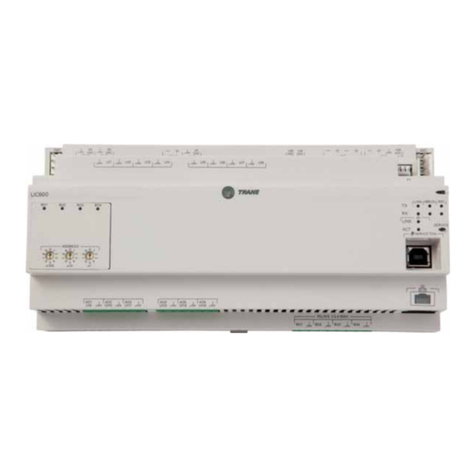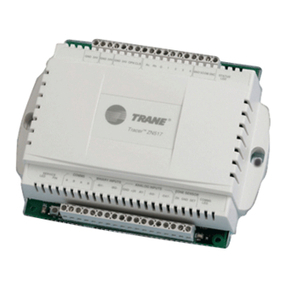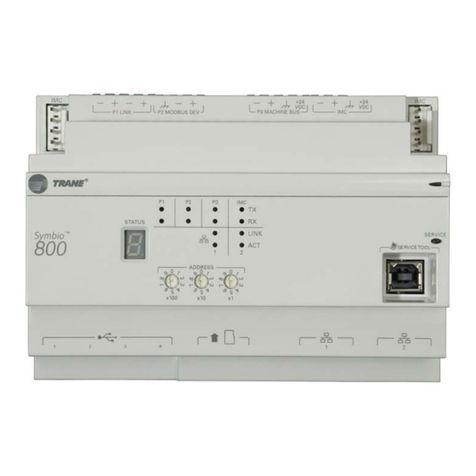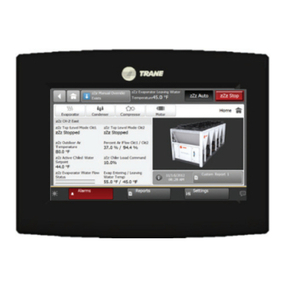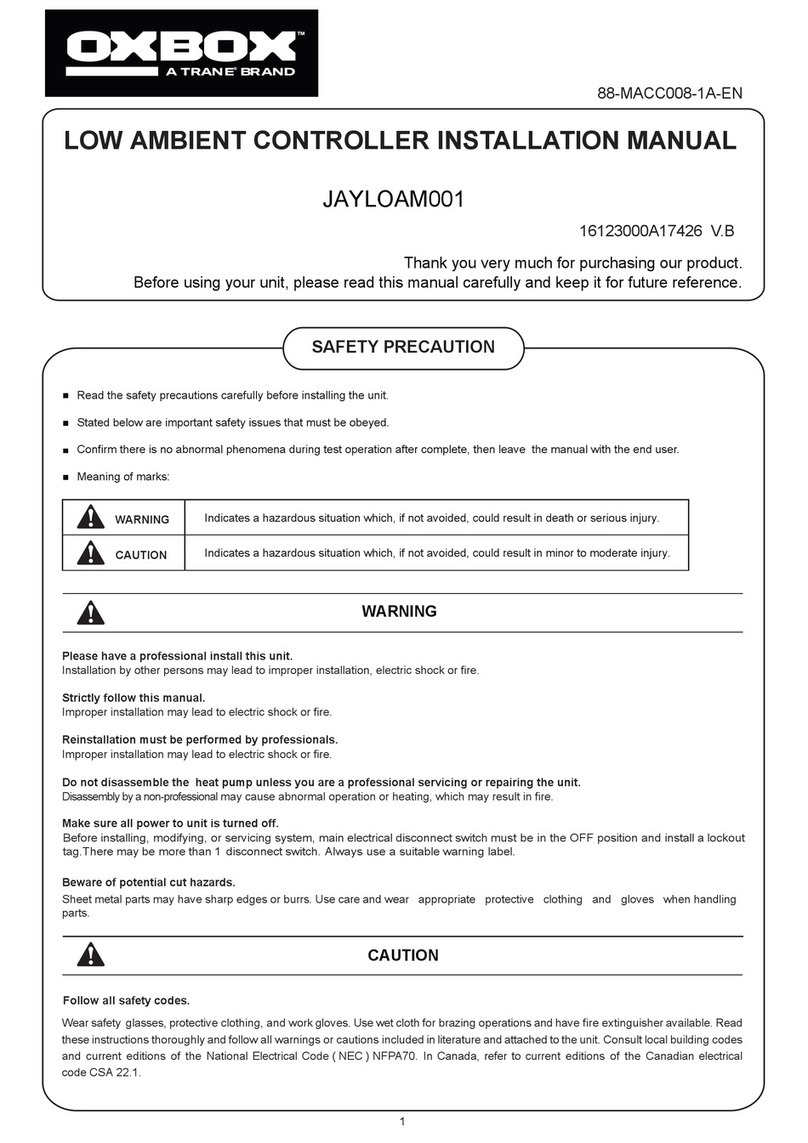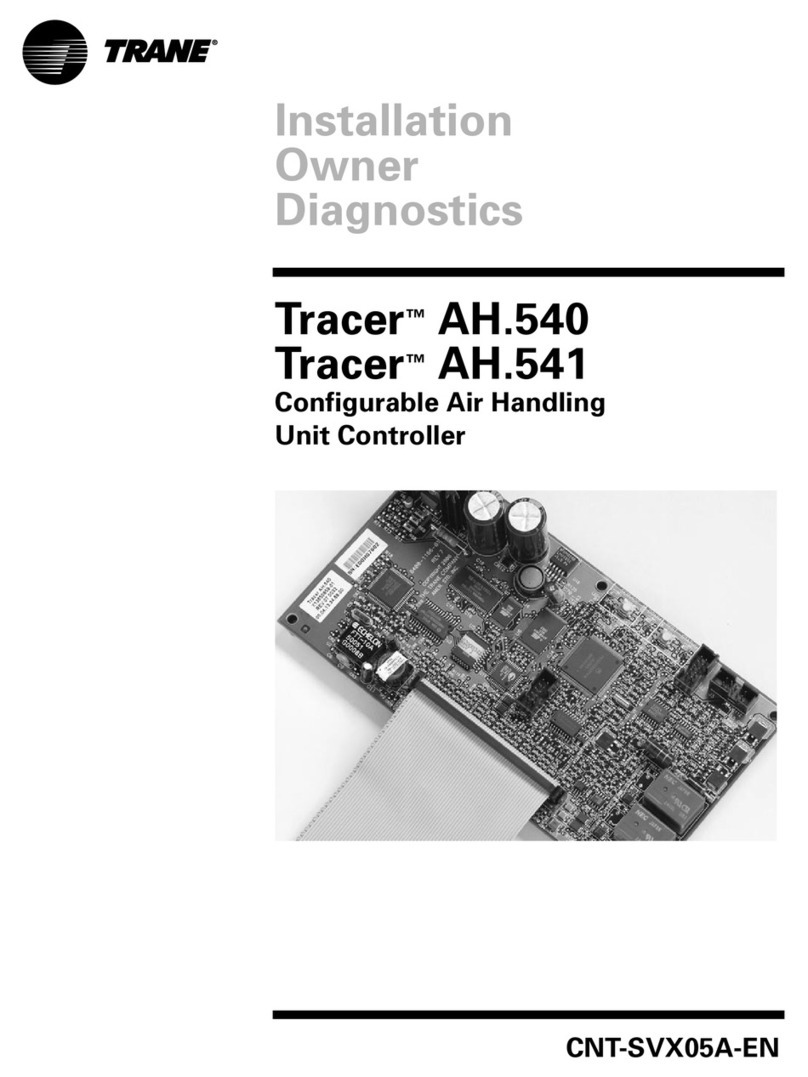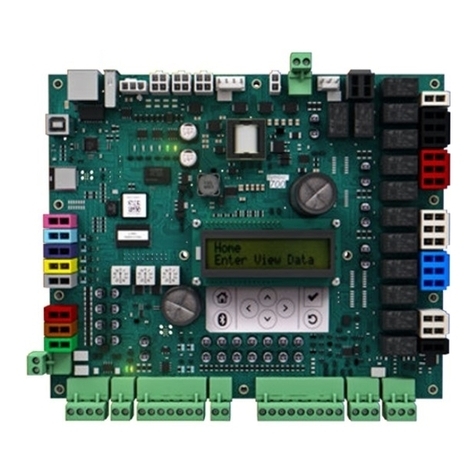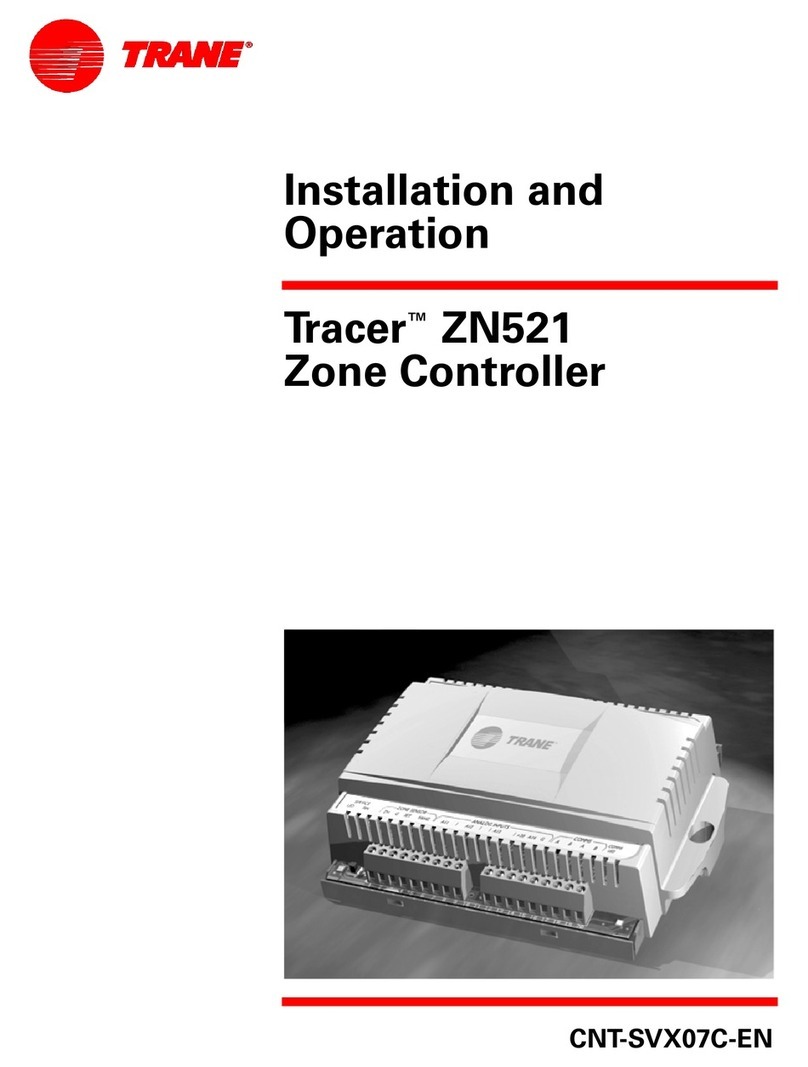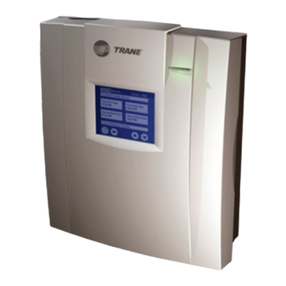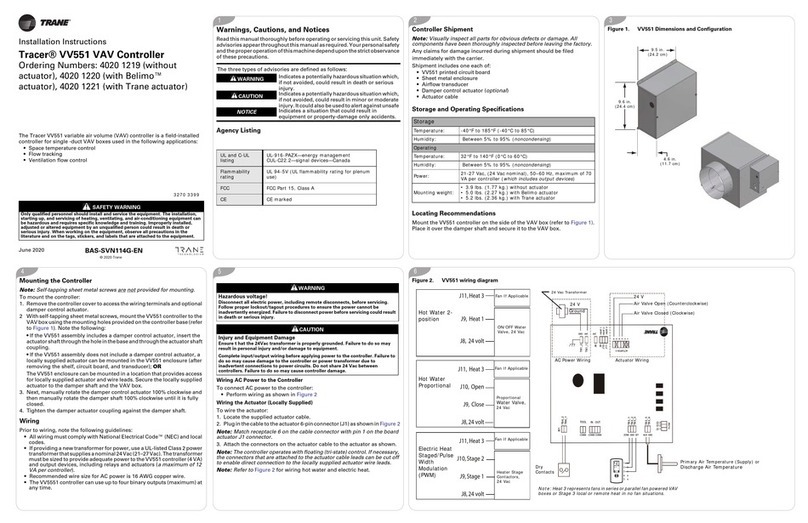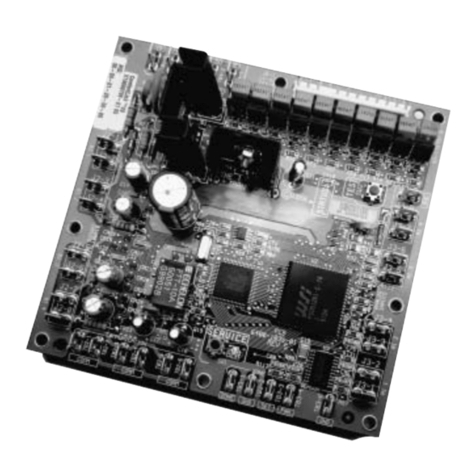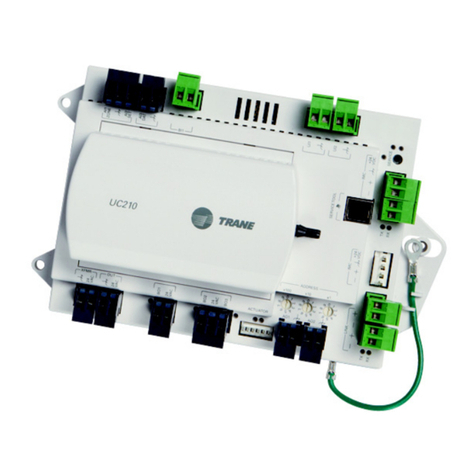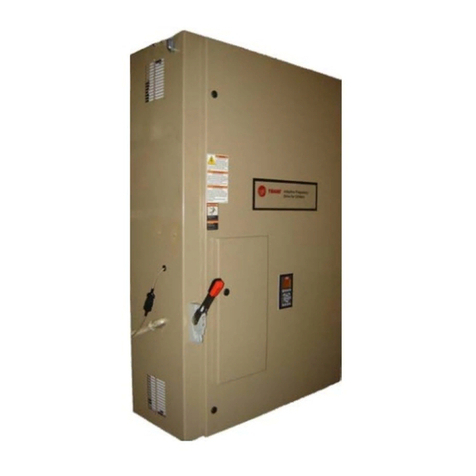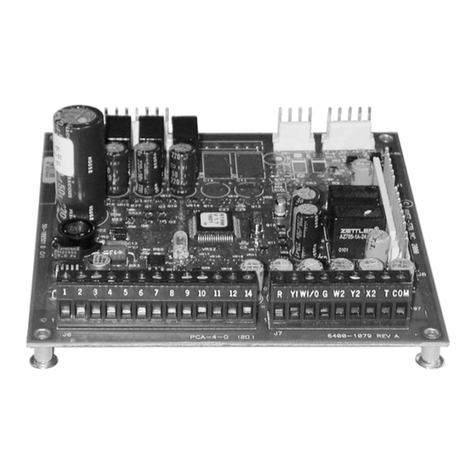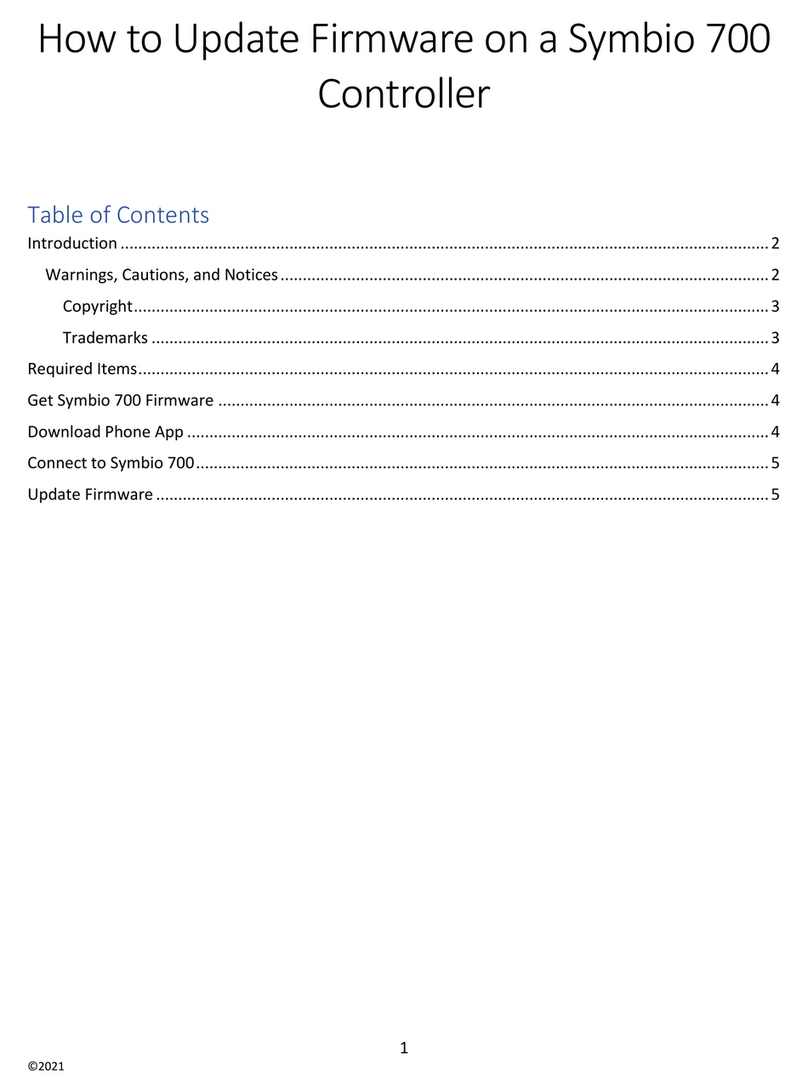
BAS-SVX091A-EN 3
Important Responsible Refrigerant Practices
Trane believes that responsible refrigerant practices are important to the environment, our customers,
and the air conditioning industry. All technicians who handle refrigerants must be certified according to
local rules. For the USA, the Federal Clean Air Act (Section 608) sets forth the requirements for
handling, reclaiming, recovering and recycling of certain refrigerants and the equipment that is used in
these service procedures. In addition, some states or municipalities may have additional requirements
that must also be adhered to for responsible management of refrigerants. Know the applicable laws and
follow them.
WARNING
Proper Field Wiring and Grounding Required!
Failure to follow code could result in death or serious injury.
All field wiring MUST be performed by qualified personnel. Improperly installed and grounded
field wiring poses FIRE and ELECTROCUTION hazards. To avoid these hazards, you MUST
follow requirements for field wiring installation and grounding as described in NEC and your
local/state/national electrical codes.
WARNING
Personal Protective Equipment (PPE) Required!
Failure to wear proper PPE for the job being undertaken could result in death or serious injury.
Technicians, in order to protect themselves from potential electrical, mechanical, and chemical
hazards, MUST follow precautions in this manual and on the tags, stickers, and labels, as well
as the instructions below:
• Before installing/servicing this unit, technicians MUST put on all PPE required for the
work being undertaken (Examples; cut resistant gloves/sleeves, butyl gloves, safety
glasses, hard hat/bump cap, fall protection, electrical PPE and arc flash clothing).
ALWAYS refer to appropriate Safety Data Sheets (SDS) and OSHA guidelines for proper
PPE.
• When working with or around hazardous chemicals, ALWAYS refer to the appropriate SDS
and OSHA/GHS (Global Harmonized System of Classification and Labelling of Chemicals)
guidelines for information on allowable personal exposure levels, proper respiratory
protection and handling instructions.
• If there is a risk of energized electrical contact, arc, or flash, technicians MUST put on all
PPE in accordance with OSHA, NFPA 70E, or other country-specific requirements for arc
flash protection, PRIOR to servicing the unit. NEVER PERFORM ANY SWITCHING,
DISCONNECTING, OR VOLTAGE TESTING WITHOUT PROPER ELECTRICAL PPE AND
ARC FLASH CLOTHING. ENSURE ELECTRICAL METERS AND EQUIPMENT ARE
PROPERLY RATED FOR INTENDED VOLTAGE.
WARNING
Follow EHS Policies!
Failure to follow instructions below could result in death or serious injury.
• All Trane personnel must follow the company’s Environmental, Health and Safety (EHS)
policies when performing work such as hot work, electrical, fall protection, lockout/
tagout, refrigerant handling, etc. Where local regulations are more stringent than these
policies, those regulations supersede these policies.
• Non-Trane personnel should always follow local regulations.
Copyright
This document and the information in it are the property of Trane, and may not be used or reproduced in
whole or in part without written permission. Trane reserves the right to revise this publication at any
Introduction
